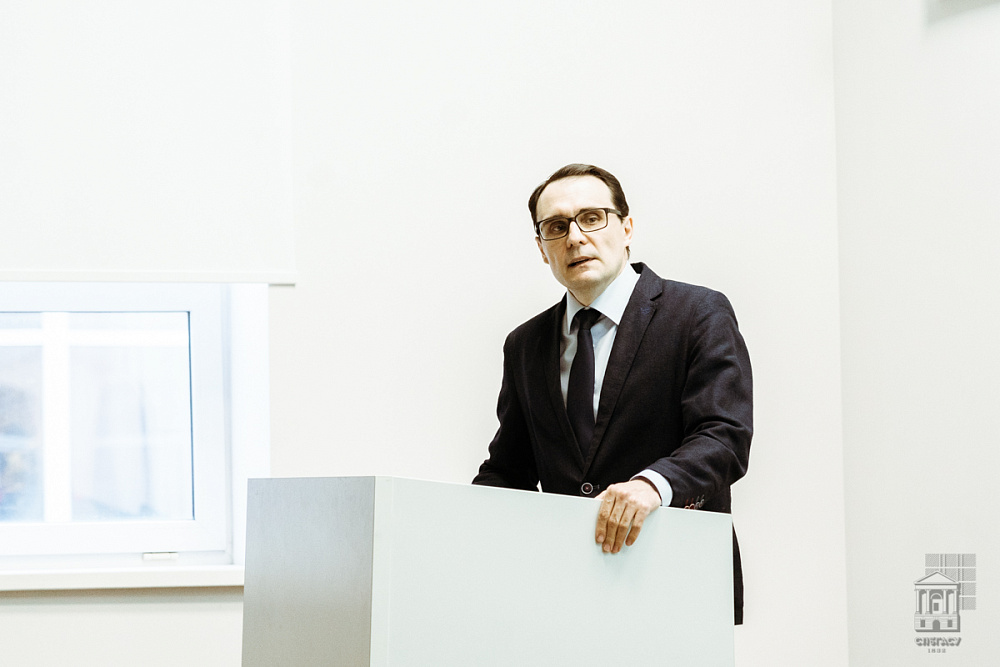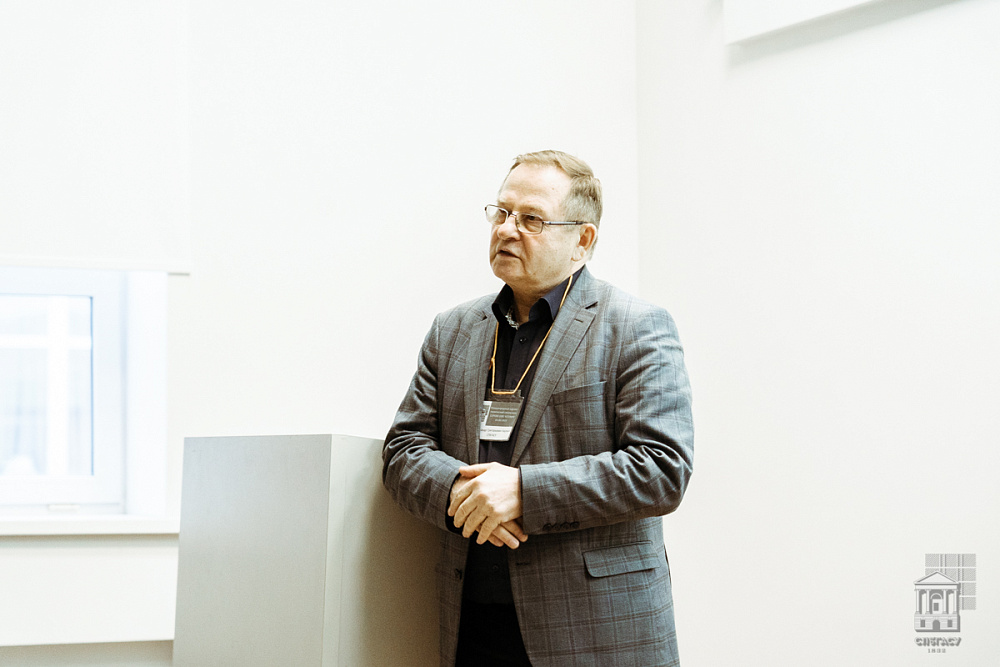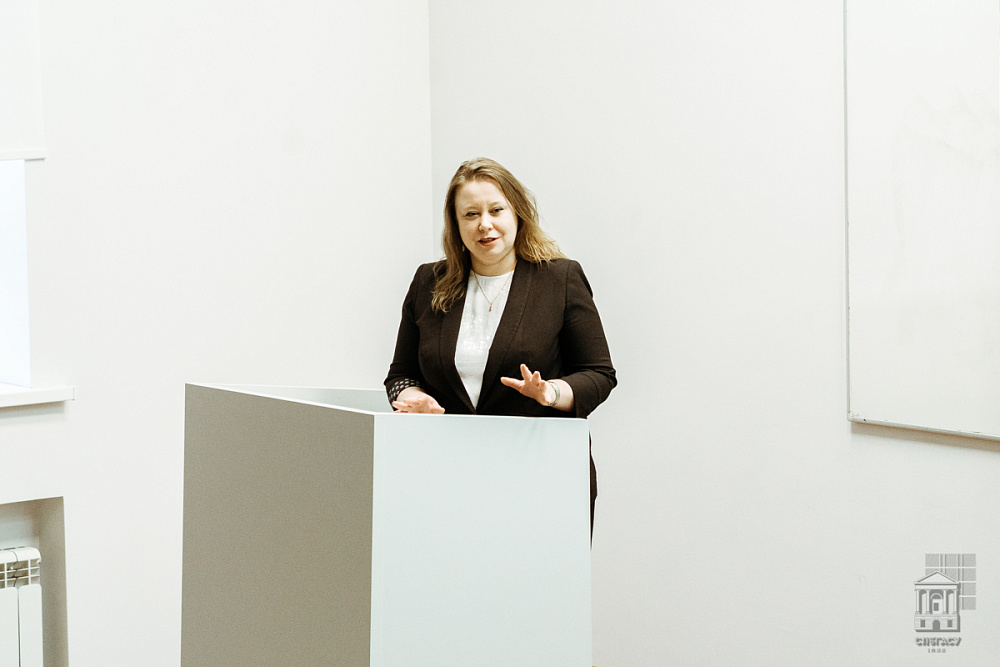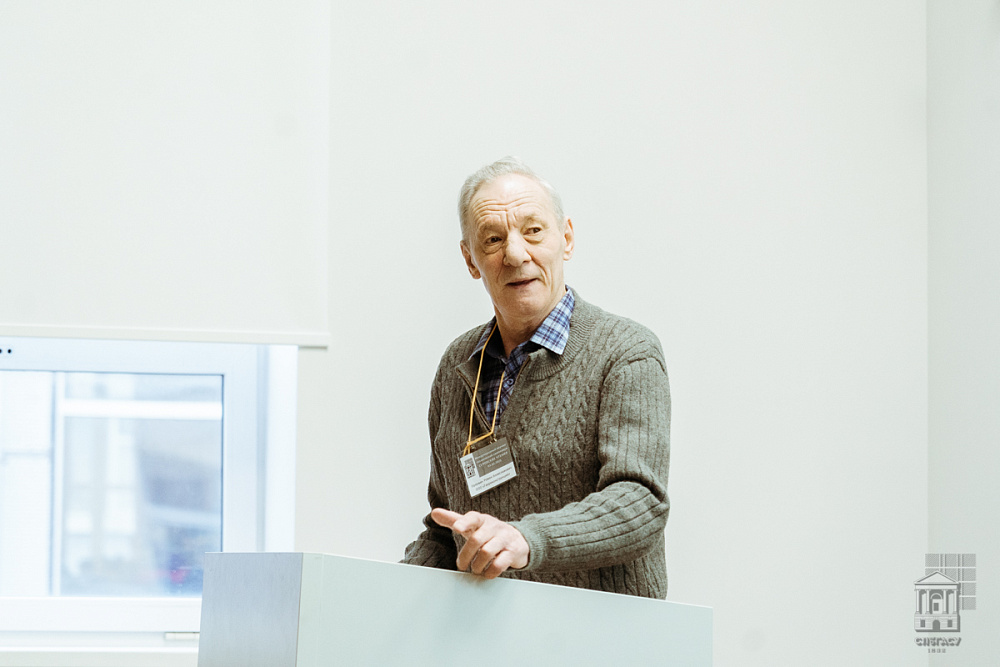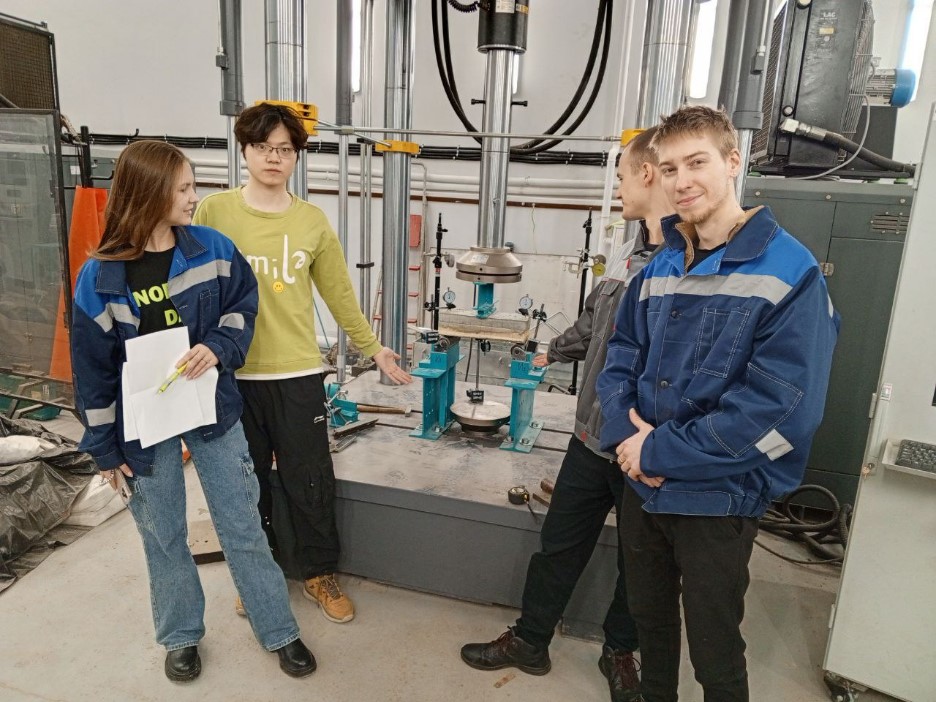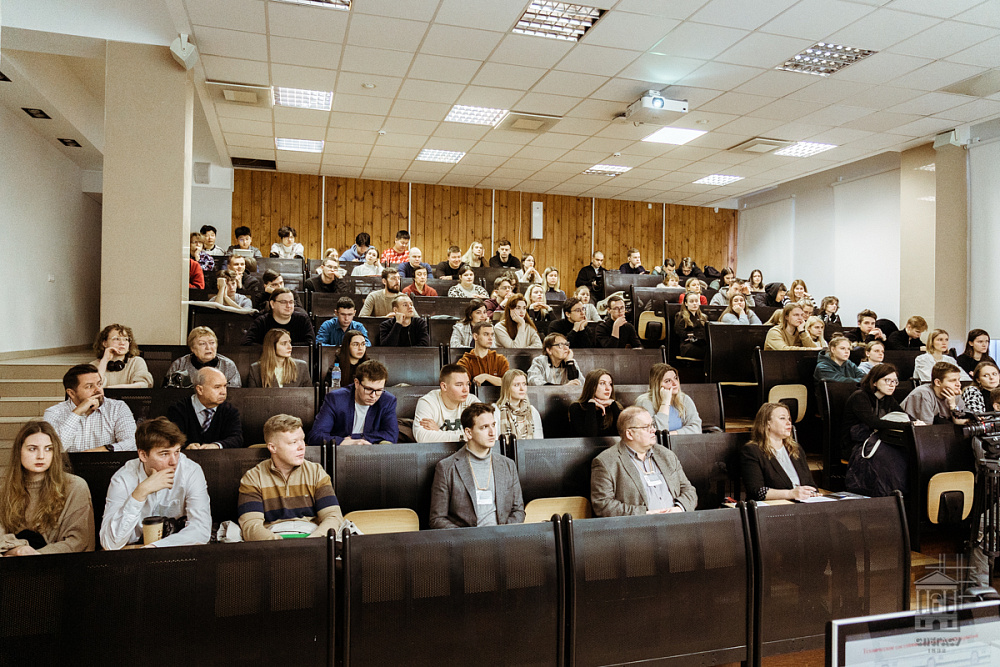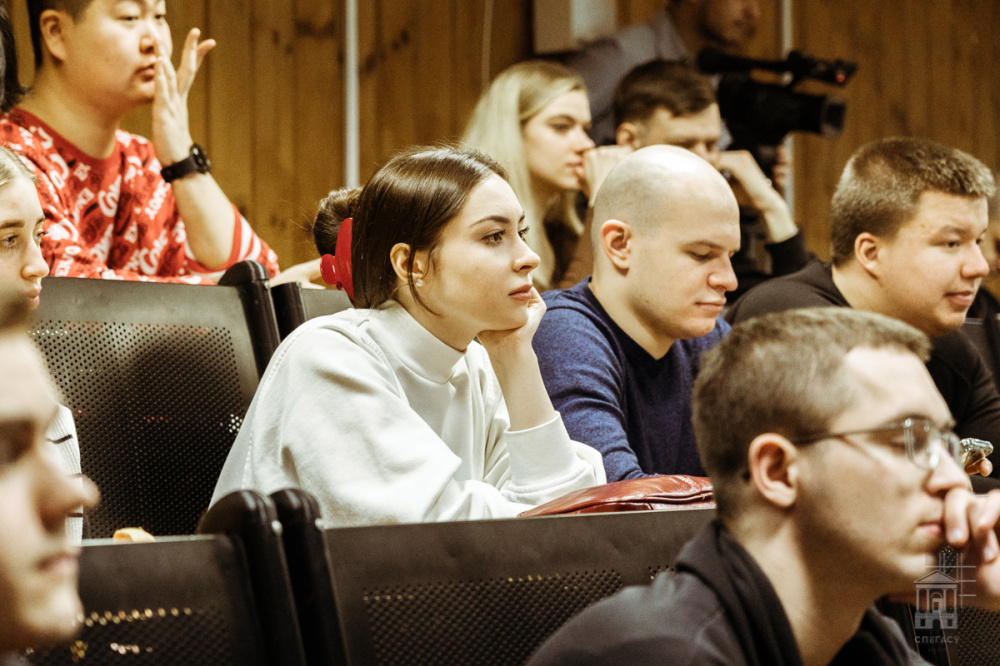 Serov Readings participants
Serov Readings participants
On 3 February, SPbGASU hosted the Serov Readings. The event, which has been held at our university since 2021, has acquired the status of an international scientific and technical symposium since this year.
In memory of a prominent scientist
"The Serov Readings are held in memory of DSc in Engineering, Professor Evgeny Nikolaevich Serov, who worked at our university for many years. The scientist is known for his participation in the development of domestic standards for the design of wooden structures in the USSR and Russia, as well as high-quality textbooks that will always be relevant," said the organizer of the symposium, Head of the SPbGASU Department of Metal and Timber Constructions Egor Danilov.
According to Egor Vladimirovich, the Serov Readings are very popular in the scientific community: they are attended by famous scientists, including those from abroad. The organizers set the goal of consolidating Russian specialists in the field of timber constructions at the SPbGASU.
Evgeny Nikolaevich Serov (1932–2018) is a prominent scientist and specialist in the field of timber constructions. He worked at our university from 1964 to 2017, rising from assistant to professor at the Department of Wood and Plastic Constructions. In 1975–1980, he headed the correspondence faculty.
Along with the main course "Wood and Plastic Constructions", he also taught special subjects, including "Engineering restoration of architectural heritage", and conducted practical classes directly at architectural monuments with unique wooden structures. The research work of students supervised by Evgeny Serov was repeatedly awarded second and third degree diplomas by the Ministry of Higher Education of the RSFSR. Combining extensive public and administrative activities, Evgeny Nikolaevich worked on the most important national economic topics of Gosstroy and Gosplan.
As a result of many years of research, Evgeny Serov developed new structural forms from glued timber structures (GTS), technologies for their production, including waste-free cutting of blank blocks, as well as calculation methods that take into account the high degree of anisotropy (unequal properties in the directions of the fibers) of glued timber. He formulated the main principle of GTS design - the principle of tracking orientation with the coordination of the fields of effective stresses and the resistance fields of anisotropic material, developed and implemented special curvilinear inserts in the junctions of frame and beam structures, a method for strengthening the support zones of GTS using glued reinforcement bars, which was used in arches with a span of 63 m.
New solutions for wood application
Opening the symposium, the SPbGASU Vice-Rector for Research Evgeny Korolev emphasized: despite its long history, the topic of wood application is constantly evolving. Today, it is necessary to search for new design and technological solutions.
Professor at the Department of Metal and Timber Constructions, Honorary President of the Wooden Housing Association Aleksandr Chernykh believes that the event provides an opportunity to pass on experience to the younger generation, and that the attention of colleagues from other universities is important for SPbGASU researchers.
Deputy Dean for Research, Associate Professor at the Department of Architectural and Engineering Constructions Olga Pastukh invited those gathered to the III National (All-Russian) Scientific and Technical Conference “Prospects of Modern Construction”, which will be held at SPbGASU on 21–23 April.
The program of the Serov Readings included 23 in-person and remote reports, 23 poster reports from 62 participants. 46 people applied as listeners, including SPbGASU students and postgraduates. Participants from Moscow, Novosibirsk, Arkhangelsk and other Russian cities, as well as from China and Vietnam, exchanged experiences and opinions on the research conducted in the field of timber constructions, their operation, improvement, and calculation.
Scientific advisor of Georekonstruktsiya LLC Roman Orlovich informed about the problems of exploitation of timber structures in historical buildings. In his opinion, wooden floors can be preserved with the right approach to analysis of their bearing capacity, physical wear and tear and damage by rot, as well as with the right use of technical solutions.
Chief Researcher of the Kucherenko Central Research Institute of Building Structures (a structural division of JSC "Research Center "Construction") Aleksandr Pogoreltsev shared the results of a study of platform joints of multi-story buildings made of CLT. He is confident that the general theory of calculating platform joints, which is successfully used in calculating reinforced concrete structures, is not applicable to wood, which is an anisotropic material (i.e. a material with different mechanical properties of fibers when forces are applied to the fibers in different directions).
The current generation of researchers are worthy successors of the famous scientist
PhD student Elizaveta Kotova presented a report on "Bearing capacity and deformability of circular LVL structures" (supervisor - Egor Danilov): "LVL timber is famous for its high strength and durability, and circular structures made of this material allow you to create elegant and effective architectural forms with large spans, without the use of massive supports. This opens up new opportunities for designing buildings and structures with a unique design. Therefore, the relevance of the study of circular LVL structures is due to the need to develop accurate methods for calculating the stress-strain state, improve the regulatory framework, increase the efficiency of design and operational safety."
As a result of studying the existing methods for calculating circular structures, Elizaveta managed to find out that information about the bearing capacity and deformability of circular LVL structures is relatively limited compared to studies of rectilinear LVL beams. This is due to the complexity of analyzing the stress-strain state in curvilinear structures.
At present, trial tests of LVL samples with different angles of inclination have been carried out to visualize the behavior of a curvilinear LVL sample under load in order to obtain the main mechanical characteristics of the material. The results obtained will be used for more accurate compilation and calculation of the LVL circular structure in the computational program. In the future, it is planned to study the stress-strain state of dowel joints. Based on the results of the numerical study, a physical model of the LVL circular structure will be developed, which will be tested in the laboratory.
The work is aimed at creating a mathematical model for calculating the stress-strain state of circular LVL structures, which will improve the efficiency of calculating and designing such structures and optimize technical solutions, which will lead to an increase in their bearing capacity and rigidity.
Master's student Yulia Trunina presented a report on the topic "The influence of low negative temperatures on the mechanical properties of LVL" (supervisor - Associate Professor at the Department of Metal and Timber Constructions Pavel Koval): "When the temperature decreases, the properties of wood change, namely, the strength and elastic characteristics become higher. This pattern allows the material to be used in regions where the air temperature is not only below zero for a significant part of the year, but also reaches -70 °C. LVL is a composite material based on wood. This allowed us to assume that its properties will also change with a change in temperature."
An experiment at freezing temperatures of -70, -35 and 0 °C on compression of small LVL samples of more than 300 pieces confirmed this pattern. At the same time, depending on the direction of the veneer fibers, the change in strength and elastic modulus occurred with varying degrees. Yulia reported that this will allow more accurate prediction of the material properties in the future. It became possible to take into account the thawing process (using the derived formula), since the experiment took place under normal conditions - at 20 ° C. These data should be used in the future for larger structures, such as beams or frames, and also to study their durability, i.e. the operation of the structure in the climatic conditions of the Arctic and the Far North, taking into account time. And it is also necessary to consider the combined effect of moisture and temperature on the structure, including in real conditions with fluctuations of these factors.
International experience
The work of PhD student Xu Kaixuan was called "Development of methods for calculating composite (wood-concrete) floor slabs of residential and public buildings" (supervisor - Professor, DSc in Engineering Aleksandr Chernykh). "I began working on this topic during my studies in the master's program at SPbGASU and chose it for my PhD dissertation. I would like to note that the research is carried out by a student team with the active assistance of employees of the SPbGASU Center for Mechanical Testing of Building Structures," the author noted.
According to the PhD student, the applied design solutions and forms of wood-concrete composite slabs are in demand in the construction of industrial, civil and social infrastructure facilities, including multi-apartment residential buildings using wooden structures made of CLT, as well as in the construction of pedestrian and automobile bridges as span slabs. Xu Kaixuan attributed the advantages of such solutions to environmental friendliness and sustainability, cost-effectiveness, and synergy of the strength properties of concrete and wood. The main problem is to ensure the joint operation of concrete and CLT under load.
During the research, Xu Kaixuan determined the types and shapes of metal connectors to ensure the joint operation of CLT slabs and concrete; he found that the combination of shape, size and location of connectors in the adhesive bond zone are critical to the bearing of the acting loads by composite floor slabs.
At present, an analysis of the best practices for the design and application of wood-concrete composite floor slabs in Russia and abroad has been conducted, and the relationships between the geometry of connectors and the bearing capacity of the samples under study have been experimentally established.
Xu Kaixuan plans to conduct numerical modeling and experimental studies to determine the missing design characteristics of the adhesive interaction in the contact zone of connectors and concrete to develop a method for calculating the stress-strain state of wood-concrete composite floor slabs.
The SPbGASU Department of Metal and Timber Constructions appeared from the merger of two large scientific centers: metal structures and testing of constructions and wood and plastic structures, highly reputed the Russian and foreign scientific community. The employees of the Department are members of the Technical Committee for Standardization in Construction. They take part in the work of the All-Russian Scientific and Technical Council for Metal and Wooden Structures. The opinions of the members of the Department are listened to in large enterprises of the industry (TsNIISK, Association for the Development of Steel Construction, Association of Wooden Housing Construction, etc.).






